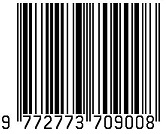Ensuring Citizen Autonomy through Blockchain: A Single Identity Framework with the Right to Control the Availability of Information
DOI:
https://doi.org/10.31357/ait.v5i02.8527Keywords:
citizen identification and verification system, hyperledger fabric, national identity, private blockchain, right to citizensAbstract
Centralized electronic national identity systems have emerged as a popular solution to address the inefficiencies and limitations of traditional, hardcopy-based identity management. However, these centralized systems are prone to significant challenges, including single points of failure, data breaches, and restricted citizen control over personal information. These issues highlight the necessity for a more resilient framework that not only provides unique identification but also empowers citizens with control over their data. This study presents a decentralized citizen identity management and verification system built on Hyperledger Fabric and private blockchain technology. The proposed framework addresses critical issues in current systems, such as gas fees, scalability, and operational costs, while enhancing security, privacy, and user autonomy. The system leverages the privacy-preserving features of a private blockchain to ensure that only authorized entities can access and participate in the network, mitigating the risk of unauthorized access. The research involved constructing a Hyperledger Fabric network, defining transaction logic to control the lifecycle of data objects within the ledger using the Hyperledger Fabric SDK for Node.js, and developing a web-based interface for interaction through the MERN (MongoDB, ExpressJS, ReactJS, Node.js) stack. By empowering users to manage and control the information they share with third parties, we ensure their data remains private, secure, and shared only on their terms. The proposed blockchain-based solution offers a robust alternative texisting identity management systems, addressing their key limitations. A distinguishing feature of the system is its network design, which restricts participation to authorized government organizations, safeguarding citizen data’s integrity and confidentiality.
Downloads
Additional Files
Published
How to Cite
License
Copyright (c) 2025 D.M.T.W. Disanayaka, P.K.P.A. Panapitiya, J.A. Aathil, B.N.S. Lankasena, H.M.S.C.R. Heenkenda

This work is licensed under a Creative Commons Attribution-NonCommercial-NoDerivatives 4.0 International License.
The Authors hold the copyright of their manuscripts, and all articles are circulated under the terms of the Creative Commons Attribution License, which permits unrestricted use, distribution, and reproduction in any medium, as long as that the original work is properly cited.
The use of general descriptive names, trade names, trademarks, and so forth in this publication, even if not specifically identified, does not imply that these names are not protected by the relevant laws and regulations. The authors are responsible for securing any permissions needed for the reuse of copyrighted materials included in the manuscript.




